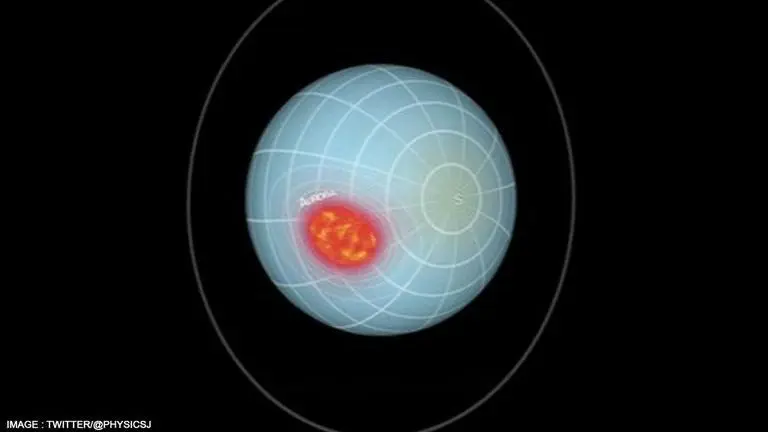Updated 20 October 2021 at 23:45 IST
Astronomers develop most detailed image of Uranus' weird auroras using infrared
Scientists from the UK's University of Leicester have created the first infrared image of Uranus' auroras hoping to solve the planet's magnetic mysteries.
- Science News
- 2 min read

A team of astronomers from the UK have developed the most detailed infrared image of auroras on Uranus for the first time, in an attempt to study the planet’s mysterious magnetic fields. According to Live Science's report, the imaging was done during a three-day live event last week using data from NASA's Infrared Telescope Facility (IRTF) in Hawaii. With this development, the scientists from the University of Leicester hope to solve the mystery of weird auroras that have been detected on the planet.
See Uranus LIVE from the observatory!
— Dr. James O'Donoghue (@physicsJ) October 8, 2021
Sign-up here to receive a link to a special live Zoom: https://t.co/tsZB6o6RRn
Youtube: https://t.co/e35m3xgtq5
These are scientific observations with many scientists giving talks! Today observers are trying to capture the aurora of Uranus: pic.twitter.com/tx7CkfIlrw
What are auroras?
Auroras are basically a result of the interaction between the solar winds and Earth's magnetic field. The Sun is continuously producing solar wind, made of charged particles that flow outward into the solar system. When the solar wind reaches Earth’s magnetic field it causes a magnetic reconnection that produces glowing lights that constantly change their shape and intensity.
Beautiful auroras on Iceland
— Georgi Dimitrov (@georgi66yu) October 20, 2021
📷 Hallgrimur P. Helgason pic.twitter.com/evx4DOnLCf
These auroras generally occur at the northern and southern poles, where the Earth's magnetism is the most powerful. However, auroras can extend even further away from the poles depending on the space weather. While scientists know almost everything there is to know about auroras on Earth, studying the same on Uranus is difficult as the planet functions totally differently.
How is Uranus' aurora different?
Although auroras on Uranus also occur as a result of the interaction between its magnetic field with solar winds, they behave weirdly owing to the planet's axis. Uranus is that one planet which rotates nearly perpendicular to the sun, meaning its poles faces the sun directly while revolving it. Besides, Uranus' geographical poles are also not aligned with its magnetic poles, like on Earth, which makes the auroras occur in places other than the poles.
Advertisement
In the infrared image developed by the astronomers, the auroras can be spotted occurring far away from the poles which are caused due to the aforementioned conditions. Citing a source, Live Science reported lead observer and University of Leicester's Emma Thomas saying that while mapping auroras on Uranus, you'll also have to look across the entire planet than just the poles.
Moreover, she stated that the interaction of the planet's magnetosphere with the solar wind is still little known and mapping the auroras can provide a better idea about the orientation of Uranus' magnetic field lines.
Advertisement
Image: Twitter/@physicsJ
Published By : Harsh Vardhan
Published On: 20 October 2021 at 23:45 IST
